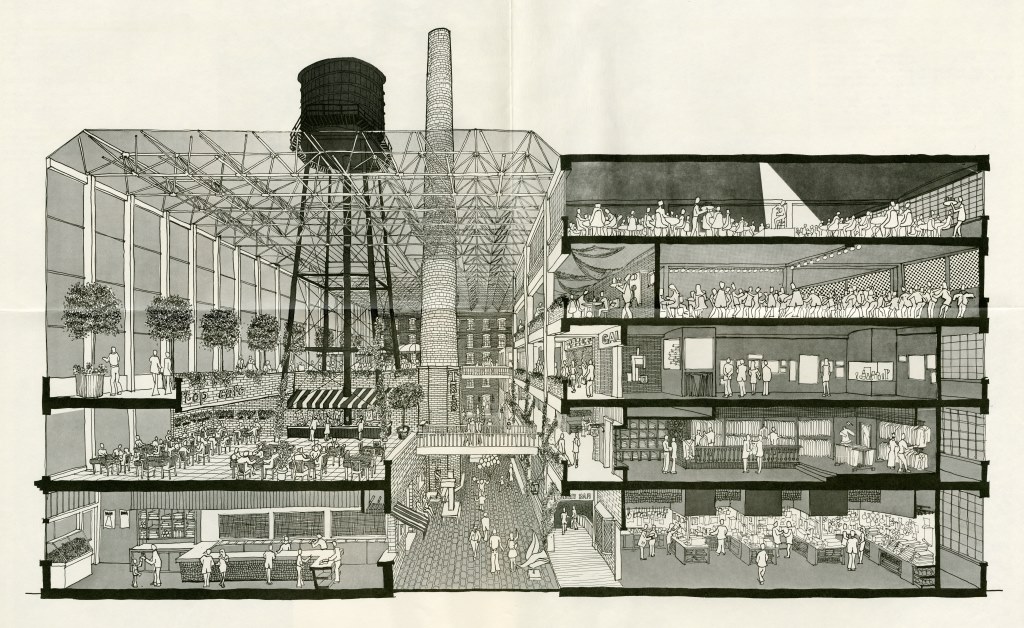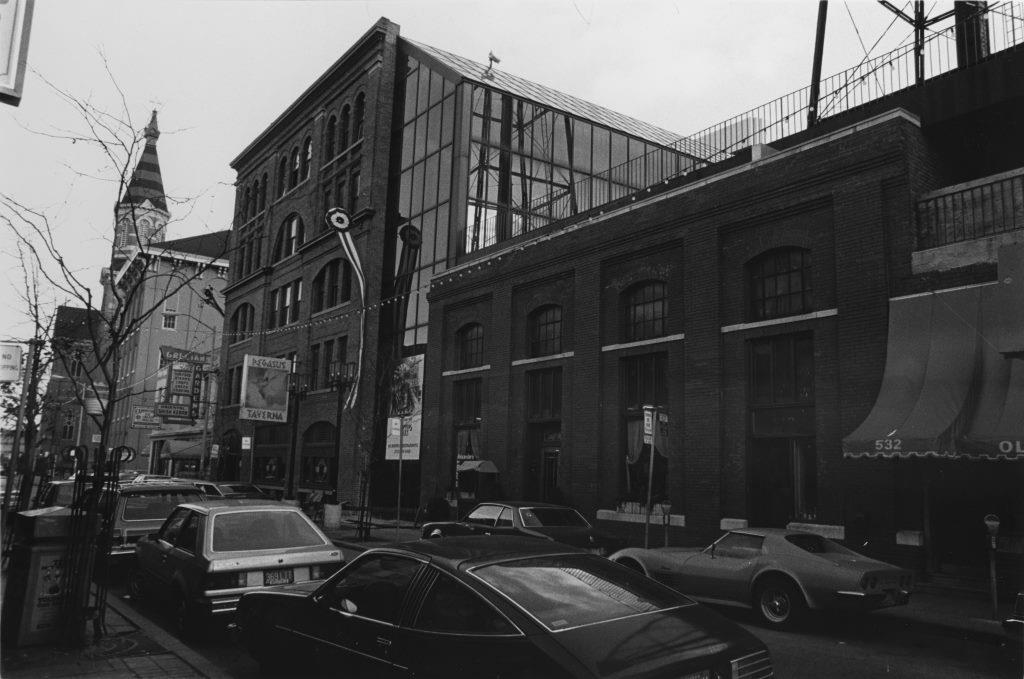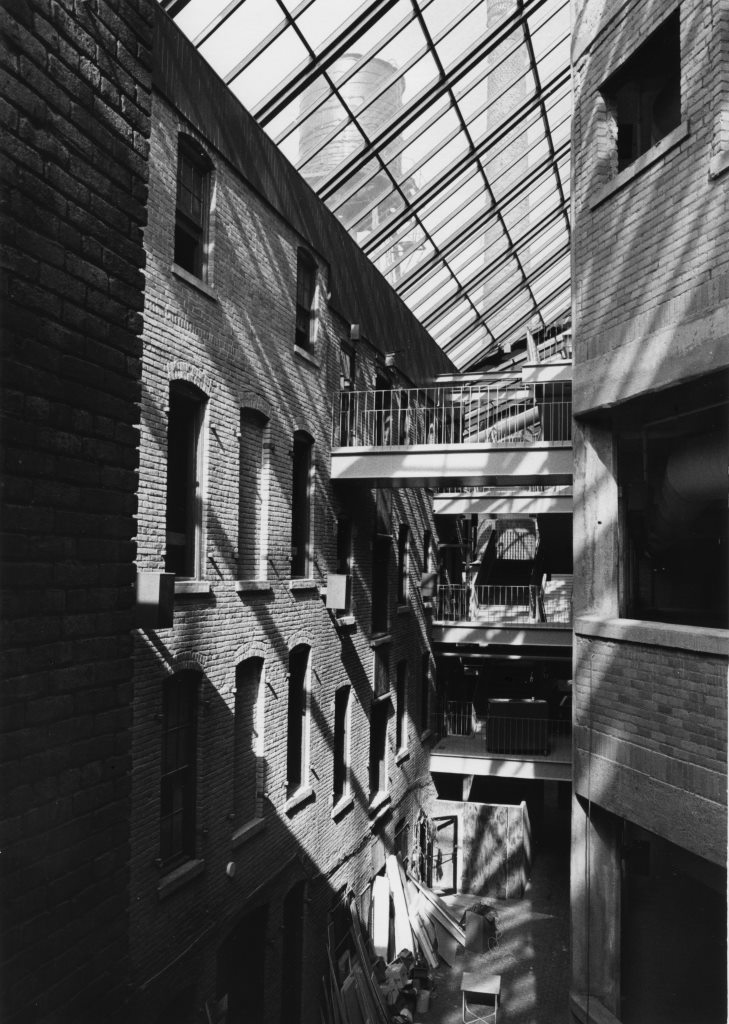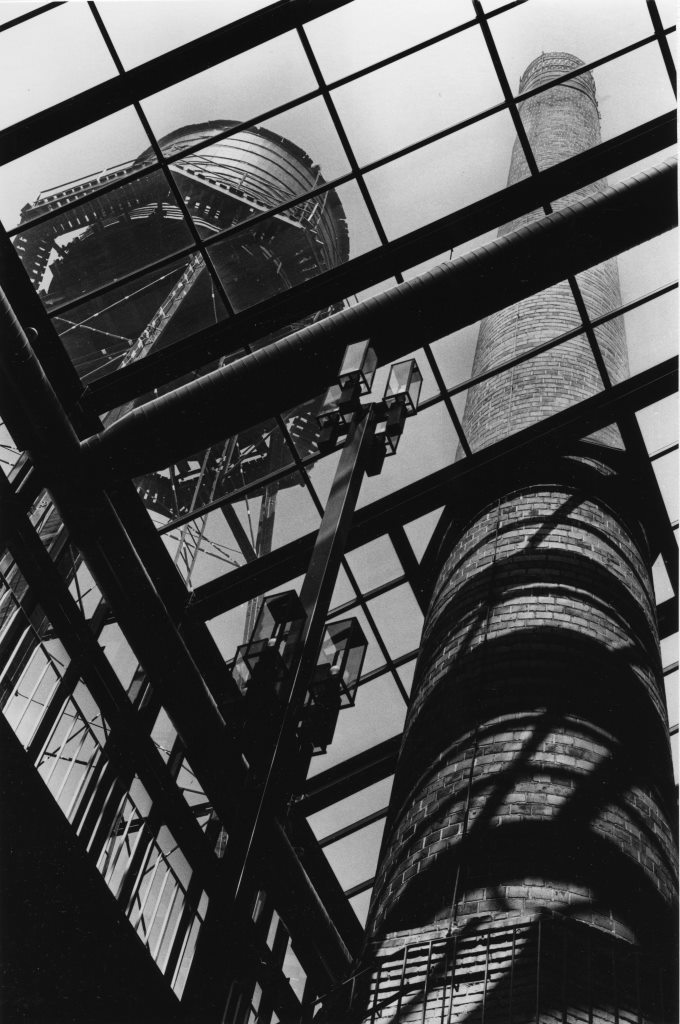Trappers Alley
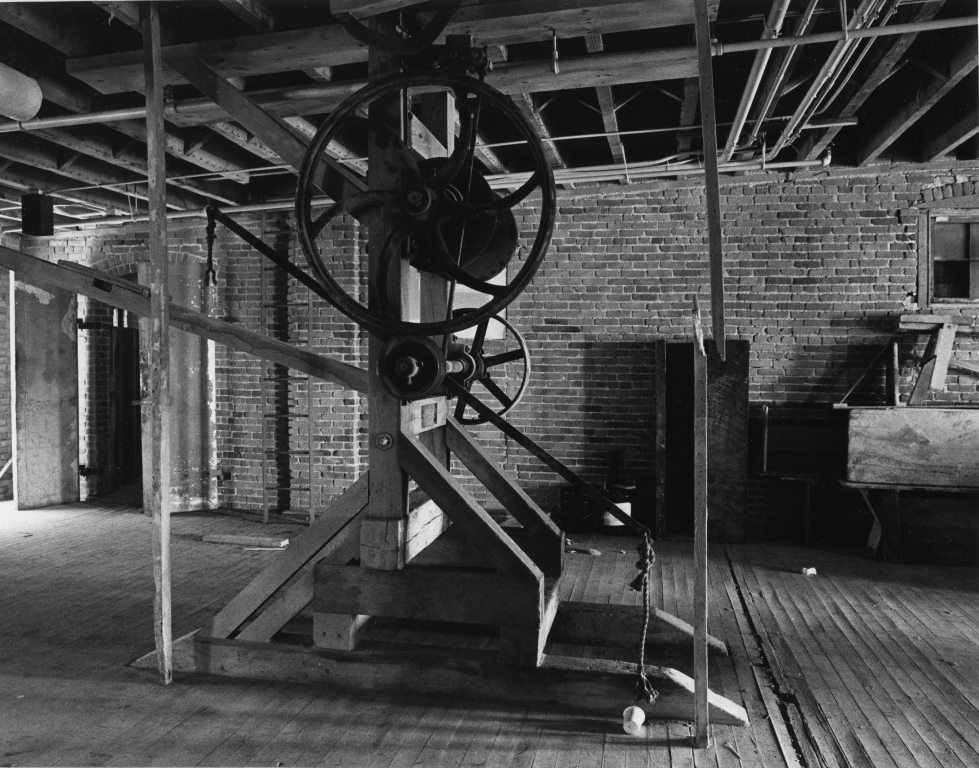
Before a casino became Greektown’s most popular draw for people in Metro Detroit, an innovative indoor shopping center spurred retail and positive attention in a 1980s downtown desperate for revitalization. Trappers Alley eventually became the name of a project to adaptively reuse the Traugott Schmidt & Sons complex along the south side of Monroe Street, between Beaubien and St. Antoine Streets. Traugott Schmidt & Sons was a successful fur tannery operation incorporated in 1889, so prolific that by 1892 there were 120 employees producing 200,000 dressed skins daily. However, by 1924 the factory ceased production and the space passed through a number of tenants. By 1958, the last member of the family involved with the business died, and the property was given to the University of Michigan.
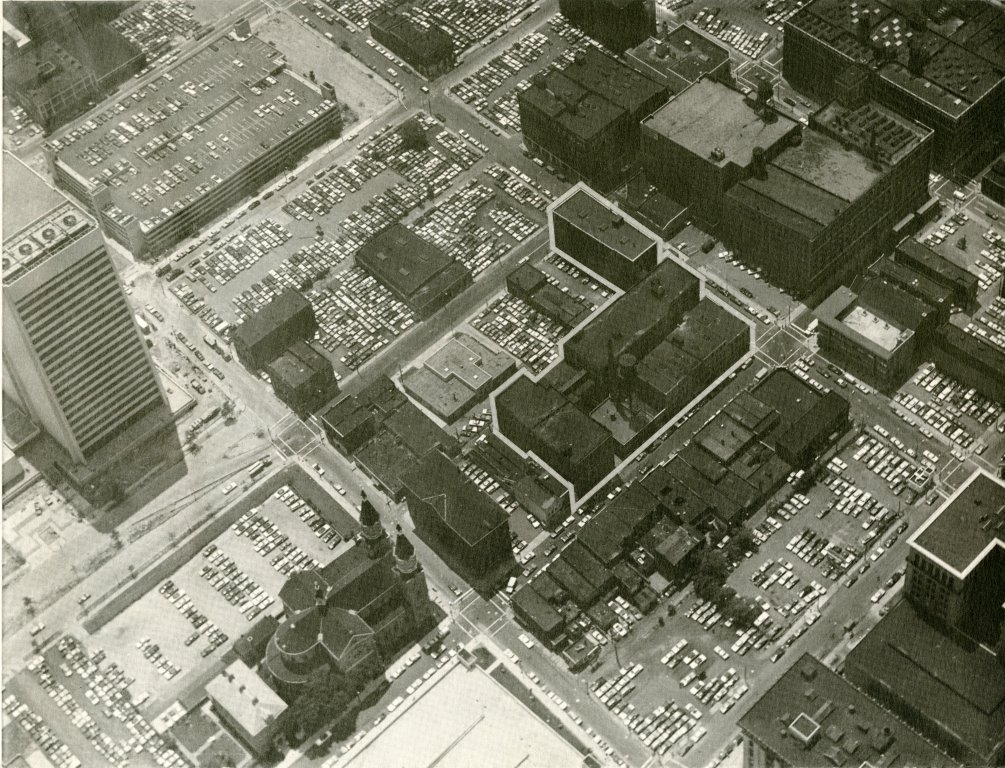
In 1975, the local Americal Development Co. purchased the brick buildings and started plans to create an indoor marketplace. Unfortunately, these ambitions were never realized and it wasn’t until Baltimore firm Cordish Embry & Associates took over the property in 1983 that the idea began to materialize. When Trappers Alley finally opened in 1985, it gave Detroiters a unique shopping experience not found in suburban malls. Much of the industrial and architectural elements were retained in the structures, so that visitors had the feeling they were in a historic and urban environment. When Greektown Casino opened in 2000, Trappers Alley became an essential piece of the new complex. Physical alterations did away with the distinctive water tower and smokestack, but guests can still experience the expansive atrium and appreciate the preserved buildings.
